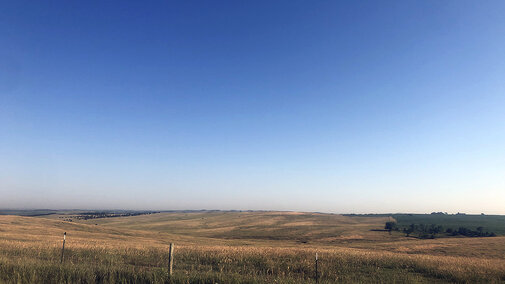Looking Back at 2023
As the new year begins, it can help us to look back at pasture and forage management and production to understand what to focus on this year. Stick around and I'll give you my thoughts looking back at 2023.
For many, managing pasture and forage during the drought was the story in much of Nebraska for 2023. At spring green-up in early May, there were less than 5% of the range and pastures in good to excellent condition with over 65% in poor to very poor condition.
Above average and timely rainfall allowed many pastures to recover. By late July into early August, over 50% of the range and pastures were in good to excellent condition, especially in the Panhandle, southwest Nebraska, and the Sandhills. Despite the good forage growth in these regions, much of the hay in these areas was either rained on after cutting or harvest was delayed until late maturity. In either case, hay quality was reduced.
However, for the eastern third of Nebraska, last year began dry and that trend continued through the end of the year. In some areas, this means that pasture and forage production could be challenging in this area, especially in early 2024.
In other areas, rain did fall. This resulted in maintaining pasture production instead of ending grazing early.
Continue reading for some ideas on improving your pastures for 2024.
Looking Forward to 2024
Last year was a difficult year for pasture and forage production. In a minute, I'll give you some strategies for improving your pastures in 2024.
Some of you may have planted a winter annual forage to graze this spring. If so, manage grazing so there is not the temptation to begin grazing perennial grass pastures too early this spring. This will help give them some additional rest and early forage production.
You might also consider frost-seeding legumes, such as red clover, in February through mid-March to boost the yield and improve the quality without adding additional nitrogen fertilizer.
When did your pastures run out this year? You have plenty of annual forage options to fill any gaps — summer annual forages like sudangrass and pearl millet, and winter annual forages, including oats and turnips, are some common ones that can be very productive. Plant and use these when your other pastures have slow growth, so you have plenty of grazing for your cattle.
Did you take an extra, late cutting of alfalfa this fall? This coming spring, it may start to grow a little slower. If so, let it start to bloom before cutting.
I hope 2024 is better for pasture and forage production!

